
SEO vs SEM are the two of the most fundamental tactics used in digital marketing, whose aim is to enhance visibility online. While SEO tries to optimize a website for higher ranks in organic search engine results, enhance user experience, and build authority through keyword optimization, content creation, and backlink building, SEM goes about paid advertising through pay-per-click (PPC) campaigns to achieve instant visibility in search results.
SEO is more of a long-term game with sustainable traffic, while SEM promises quick wins at the cost of continuous investment. Together, they create a potent strategy that can drive traffic and conversions.
We have covered the differences for you below between SEO vs SEM. Having this in mind, you will be better placed to know which strategies are best suited to improving your website and pushing it through to much traffic.
SEO vs SEM can be understood in terms of their focus and approach. SEO can be said to involve content optimization, keywords, and technical improvement, which focuses more on the improvement of search results of a website, while SEM incorporates paid search ads similar to Google Ads itself in order to drive traffic and can do so fast using paid search results.
Let us look into the below figure to know more detail on SEO vs SEM
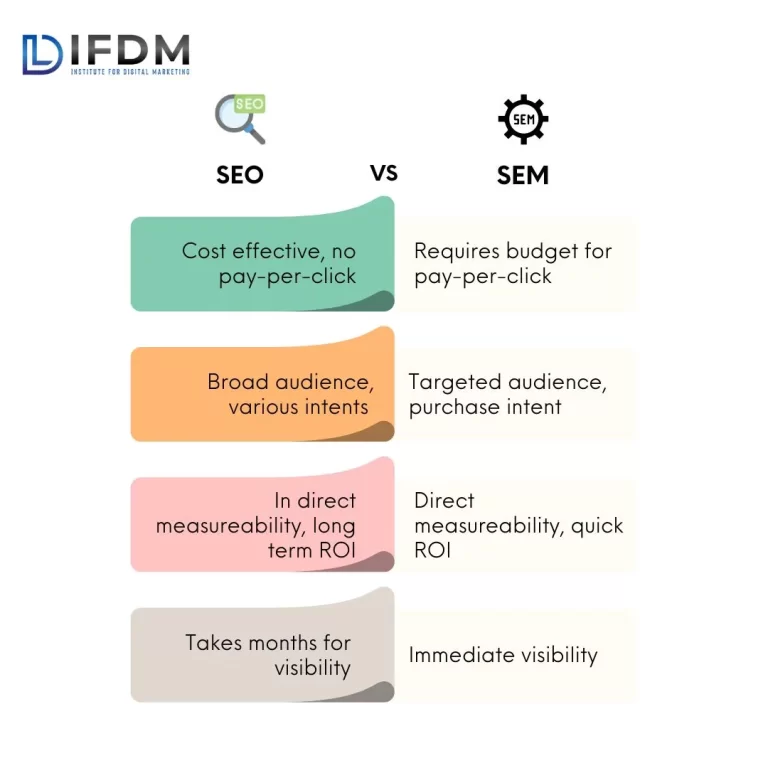
SEO refers to the manipulation of the structure and content and also the external links of a website for achieving higher SERPs. All this implies finding the right keyword, writing quality content, and ensuring that the website is user-friendly and fast.
In addition, the addition of backlinks from other good websites will increase credibility. The purpose of doing this is to make the site more attractive to the search engines, and the traffic will start being organic over time. Regular updates and monitoring ensure the strategy adapts to changing algorithms and trends.
Here’s an overview of How SEO works,
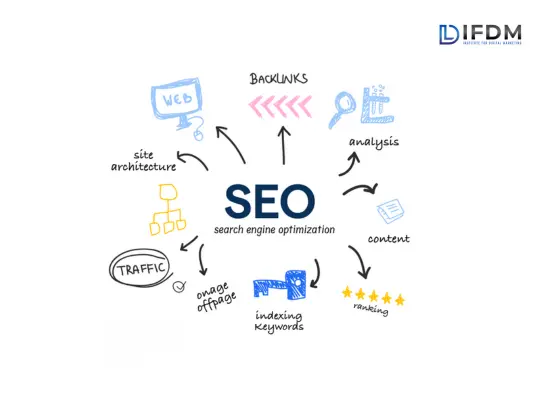
Keyword Research: Identify relevant search terms people use.
Optimize Content: High-quality content in the best use of targeted keywords.
Technical SEO: Improve the speed, mobile-friendliness, and security (HTTPS).
On-page SEO: Meta tags/headings and URL structure optimization.
Off-page SEO: Form backlinks from esteemed sources to create credibility.
User Experience (UX): Simple navigations, interesting content, and low bounce rates.
Monitoring & Updates: Keeps updating the content while keeping an eye on the performance.
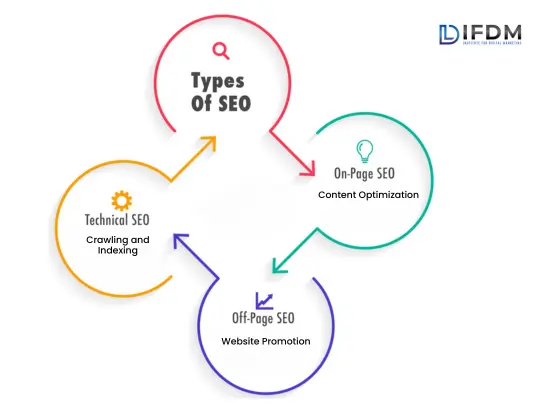
On-page SEO:
On-page SEO means optimization of many pages on a website to acquire higher rank in search results and relevant traffic. Some of its key features include the application of relevant keywords in the title, headings, and content; creative meta descriptions; clean URLs; and improved internal linking
Off-page SEO:
Off-page SEO represents activities outside of your website that boost its rankings in search engines. The key pieces include good quality backlinks from credible sites, creating social media engagement to drive visitor flow and brand awareness, and online mentions and reviews.
Technical SEO:
Technical SEO refers to the optimization of the behind-the-scenes elements on a website so that it will operate much better on the search engines. Some of the key areas touched by technical SEO include improving site speeds, having a mobile-friendly version, use of HTTPS for security, XML sitemap provision, and addition of structured data. All these have been proven to enhance the crawling, indexing, and serving understanding of search engines in regard to the ranking of your website and enhancing its user experience.
Local SEO:
When comparing SEO vs SEM, Local SEO makes optimizations to the website such that the website’s positioning in the local-based search results will be maximized. The most important places are as follows: Optimization of your Google My Business listing, a reality check if your business information is the same in every local directory, using local keywords and how to manage reviews coming from customers, as well as backlinks gaining locally. These ensure an attraction of much more customers from your specific geographic area.
Keyword Research: Selection of appropriate terms and phrases to be pursued in the content.
Content Optimization: Improvement of quality and relevance in the content with targeted words.
On-Page Optimization: Improvement of elements on your website such as titles, meta descriptions, headings.
Technical SEO: Work concerning technical aspects such as site speed, mobile-friendliness, and security.
Backlink Building: Getting quality incoming links to strengthen the authority from other sites.
User Experience (UX): Improvement of navigation, design, and usability to improve engagement.
Local SEO: Optimizing for local search results to attract people located in specific geographic areas, which is local SEO. It tracks rankings, traffic, and other metrics with tools to fine-tune strategies, and performance tracking.
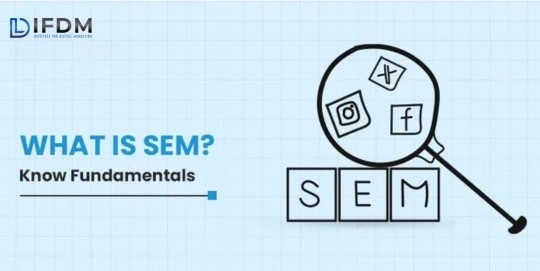
SEM or Search Engine Marketing works by marketing a website with paid search ads on the search engines. There, you’ll decide which keywords are most relevant and craft your ads; additionally, you’ll establish your bid amount, and you’ll even have predefined audiences selected. All your ads appear in a sponsored area of the search results, and you track spending while also keeping track of performance. Ongoing optimization continually enhances effectiveness and ROI in your campaigns.
In summary, here’s an overview of how it works.
Keyword Selection: First, select keywords that potential customers would most probably type in the search box to find products or services your business offers.
Ad Creation: Then create an attractive ad copy and create ads that you want to display in the SERPs when people search for them.
Bid setting: The process of setting a predetermined amount of the bid. This includes an amount that you would like to spend for every click pay per click, or every thousand impressions, CPN, on your ads. This is what makes your ad placement on the auction-based system.
Targeting: Targeting options help to determine who sees your ads based on preferences about location, device, demographics, and time of day.
Ad Placement: Shows your ads above or below organic listings, in sponsored sections of search engine results pages.
Budget Management: Sets a budget for one’s SEM campaigns and also tracks their expenditures.
Performance Tracking: Uses analytical tools to track the performance of the ads by tracking clicks, impressions, and conversions.
Optimization: There should be a continuous attempt to adjust and optimize the campaigns against performance data for better results and ROI.
PPC stands for Pay-Per-Click marketing. It is an internet advertisement where the advertiser pays money for every click on that advertisement. It involves setting up ads, determining keywords to trigger those ads, placing a bid on the most preferred keywords, and only paying for visits that click on the displayed ads. PPC makes it possible to have targeted and immediate traffic with performance monitoring to optimize campaigns.
Ad Networks:
PPC ads may appear on a search engine, such as Google Ads, social media platforms, and display networks, like Google Display Network.
Ad Auction:
This auction-based system in which a keyword may be sold to the highest bidder; however, quality and relevance also have a role to play in determining which ad will be at the top position.
Targeting Options:
PPC ensures that targeting accuracy is achieved at the demographic, location, interest, and even behavior level so that the closest target market can be reached.
Ad Extensions:
These include site links, call buttons, and location information to enhance ad visibility and effectiveness.
Budget Control:
The advertiser may choose a daily or monthly budget and track spending on whether his campaign is cost-effective. Testing Different Ads by running A/B tests to know which is the best performer, thereby optimizing ad copy and design for more effective results.
Conversion tracking:
PPC campaigns can track what could be considered “the gold standard” in ROI measurement-that is, real actions such as purchasing or signing up-to measure how precise targeting strategy is.
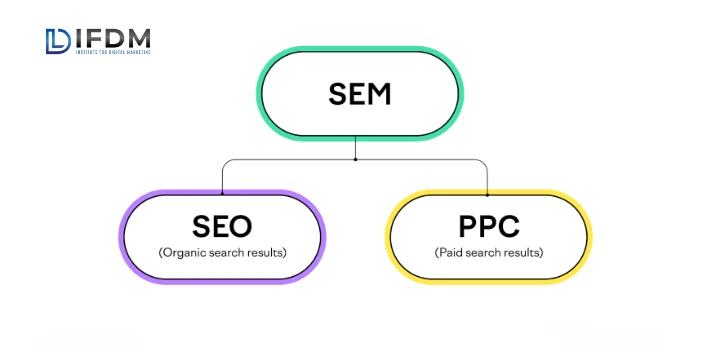
Paid Search Ads: Showing ads on SERPs, since they have to be paid for and appear only based on particular keyword biddings.
Keyword Targeting: Choosing the keywords through which your ads will be triggered and displayed when the users search for the terms.
Bid Management: Setting and tracking their bids for ad placements control and cost-per-click.
Ad Copy Creation: Creating rich ad copy along with awe-inspiring visual appeal in the way to attract and engage the right potential customers.
Targeting Option: The audience targeting can be refined based on demographics, location, device, and behavior.
Performance Monitoring: CTR, impressions and conversions; these are some of the measures that indicate whether an ad is effective.
Budget Management: Interprets and allocates budget so as to regulate spending on ads hence creating a continuous optimization of ROI.
A/B Testing: It tests various advertisement variations for advertisers to discover which messaging and design work best.
Remarketing: Rather than approaching a new audience, one retargets people who have previously visited your site or engaged with your brand.
Ad Extensions: It absorbs other features like site links, call buttons, and location information that increase the ad’s visibility and functionality.
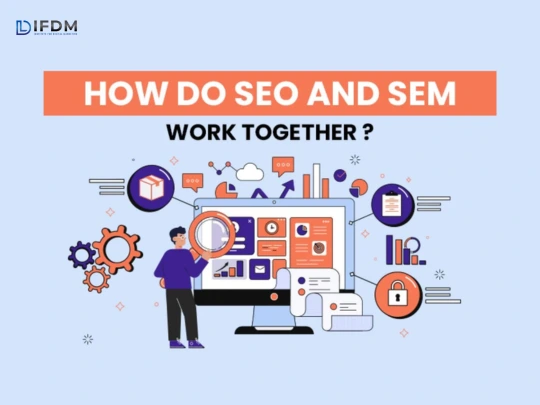
Combine SEO and SEM to bring about a holistic digital marketing strategy, supporting both organic and paid searches.
SEO vs SEM are complementary strategies when used together, offering a balanced approach that maximizes online presence and effectiveness. SEO lays down a good foundation for organic growth while SEM gives instantaneous results that can be easily measured. By integrating these two strategies, you will get to amplify your efforts with other digital marketing strategies while taking advantage of instantaneous and long-term successes.
Benefits of Integrating SEO and SEM:
In conclusion, the basic components of a comprehensive digital marketing strategy are SEO and SEM. By reflecting on SEO VS SEM, we conclude that both benefit from different advantages and play altogether different roles in digital marketing.
SEO is a long-term approach to increasing efforts in making your site optimized to rank well in organic search through content optimization, technical improvement, and keyword use. It builds lasting credibility that generates sustainable traffic over time.
On the other hand SEM gives fast exposure on paid search ads with high precision regarding targeting and fast result-generating capabilities. Its best usage is found in driving targeted traffic, supporting promotions, and testing market responses.
Combining both would allow businesses to pull the best out of each strategy and hence get the most out of their online presence. SEM leads to immediate results and complements SEO efforts while SEO provides strong bases for organic traffic. All this comes together to form a robust synergy that enhances visibility, improves ROI, and achieves comprehensive digital marketing.
The best digital marketing course in Ambattur depends on your needs. According to the list, all of the above are the best but, If you are looking for a practical digital marketing course session with an affordable price, then IFDM is the best choice.
Job roles range from Digital Marketing Specialist to SEO Expert, Social Media Manager, Content Marketing Manager, PPC Specialist, and other related ones.
IFDM provides a thorough curriculum that covers all fundamentals of digital marketing course, including SEO, social media, content marketing, and analytics.Completing a course at IFDM often comes with a recognized best digital marketing certification at a reasonable price.
The certification can be attached to your resume and make you more marketable towards SEO-related job opportunities. Give you the confidence to look for jobs with an advanced salary and clearing it. Boost your abilities with projects and case studies that correspond to the current search engine algorithms.
The price for a digital marketing course in Ambattur will vary from one institute to another and upon the level of the course. The basic courses usually come at a cheaper rate and barely cover the fundamentals of digital marketing. The intermediate courses present a deep dive with more modules.
12/14B, Chakra Nivas, Harikrishna Naidu St, Venkatapuram, Ambattur, Chennai, Tamil Nadu 600053
Ph: +91 93604 52526
©2023. IFDM . All Rights Reserved.